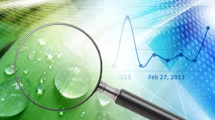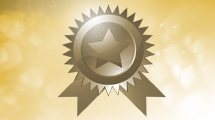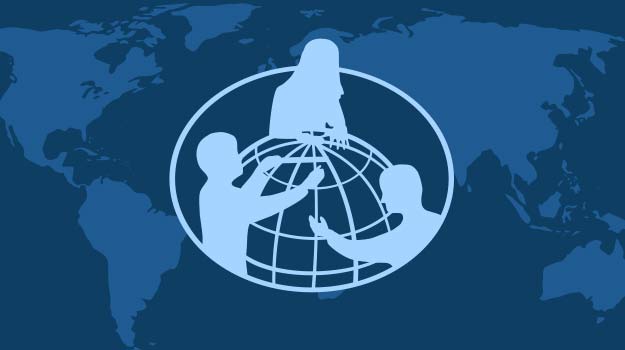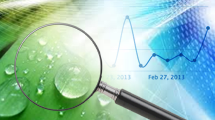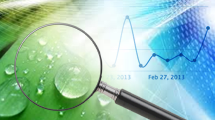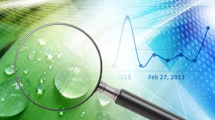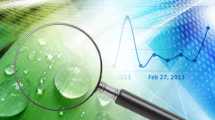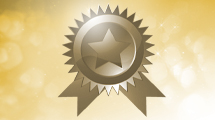News - NASA Langley Research Center
News
Filter By:
08/30/2013
Community Spotlight - Marcy Seavey
The love of learning and passion for doing GLOBE has long been part of Marcy Seavey's life. Currently, she is Program Director for the Iowa Academy of Science and she coordinates the GLOBE Partnership and Project WET (Water Education for Teachers) and provides staff support for the Iowa Junior Academy of Science and the Iowa science teaching section of the Academy.
>>
08/28/2013
Sixth Annual Siemens 'We Can Change The World' Challenge
The Siemens We Can Change the World Challenge is the premier national environmental sustainability competition for K-12 students in the United States. Through project-based learning, students learn about science and conservation while creating solutions that impact their planet. Beginning August 13, 2013 through March 4, 2014, teams from across the country will be challenged to create sustainable, reproducible environmental improvements in their local communities.
>>
08/19/2013
From GLOBE Star Student to GLOBE Star Teacher
From GLOBE star student to GLOBE star teacher
Through the eyes of a teacher, seeing a star pupil go on to inspire other students through teaching is a source of joy and pride.
This is the case for Peggy Foletta, who recently retired after chairing the science department at Kingsburg High School in Fresno County, Calif., for 28 years and handed off the teaching reins of the program to an instructor who was one of her brightest students.
During her 37-year tenure as a teacher, Foletta stumbled upon a NASA educational program, which she thought could make a positive impact on her students' learning process. In 1995, Foletta brought the Global Learning and Observations to Benefit the Environment, GLOBE for short, program to Kingsburg.
GLOBE is a worldwide, hands-on science and education program. During the week of Aug. 12–16, more than 250 teachers and students from more than 25 countries will gather in Hyattsville, Md., to share their experiences implementing GLOBE in their schools and to plan collaborative projects in the coming year. The students also will showcase their research projects. The teachers and students will talk to NASA Earth scientists, as well as conduct and receive training in GLOBE science protocols at NASA's Goddard Space Flight Center in Greenbelt, Md., to take back into their classrooms across the world.
Reeling in students globally with in-the-field scientific measurements, GLOBE could harness an interest in science and turn it into a passion.
"Students learn to investigate scientific questions like actual scientists so, using specific protocols that allow them to compare data through time and across physical geography around the world," Foletta said. "It leads them to wonder about what they observe, which leads to questions and investigations generated by students themselves that mimic the way scientists tackle outstanding scientific problems."
She believes students who observe and understand their environment learn to value it and strive to preserve it.
During Foletta's tenure at Kingsburg, she crossed paths with a student in an advanced-placement biology class, Leigh-Ann Olsen. Olsen was a high school junior when she began participating in GLOBE.
Foletta remembers Olsen as being "talented" and a "go-to" person during many different projects. "She had a good background in many areas of science and knew more geology and astronomy than the others," Foletta said.
Foletta recalls being involved in two partnerships with NASA. Olsen participated in both. One in particular was about air quality in the valley surrounding their hometown. This became Olsen's focus as a GLOBE student.
"Leigh-Ann was the epitome of a GLOBE star student," Foletta said. "Who better to become a GLOBE star teacher?"
Nearly two decades after first working with GLOBE, Foletta has moved her things out of her Kingsburg science classroom, and Olsen is moving in. The student has now become the teacher.
"It was always in the back of my mind that I wanted to do this at some point in my career," said Olsen, who now has a degree in biology. "This last year, I had the opportunity to apply for the biology position opened due to Peggy's retirement, and I took it."
Taking the position just made sense to Olsen. "Peggy really stretched my brain, and got me out in the field," she said. "Getting me out into the world, doing real science, taking data and analyzing it helped to cement it all for me."
Olsen hopes many of her future students will feel the same way. As for her teaching goals, Olsen wants to awaken their understanding of science. "I want them to know that science isn't only about reading a book or working in a lab," Olsen said. "There are so many other things to become involved in, and GLOBE is a great gateway to those opportunities."
As for Foletta, she isn't saying farewell to GLOBE just yet. She currently serves as coordinator of the Central San Joaquin Valley GLOBE Partnership and as a highly ranked GLOBE trainer. She has served at more than 50 training events around the United States and in Germany. Foletta is also on the GLOBE Education Committee.
To learn more about GLOBE, visit http://www.globe.gov.
Crystal Garner
NASA's Goddard Space Flight Center, Greenbelt, Md.
>>
08/06/2013
Virginia Teacher Turns Cooper Cougars into GLOBE Kids
Virginia Teacher Turns Cooper Cougars into GLOBE Kids
July 31, 2013
Students at Cooper Elementary Magnet School in Hampton, Va., are on their way to collecting and sharing science data with other kids around the world with The Global Learning and Observation to Benefit the Environment (GLOBE) Program.
Cooper Elementary Magnet School students
One of the second grade cooperative groups at Cooper Elementary Magnet School designing a water collection container, inspired by their GLOBE storybook, "Discoveries at Willow Creek."
Image Credit: Shirley Sypolt
The Mystery of the Missing Hummingbirds
The GLOBE storybook series follows the same set of characters throughout each book. Character adventures address key science concepts such in ares such as clouds, soil and water. The book pictured above describes bird migration patterns.
Image Credit: The GLOBE program
Last fall at the Virginia Association of Science Teachers Conference, Shirley Sypolt, a teacher at Cooper Elementary, discovered one of GLOBE's free educational resources – a series of children's storybooks that introduce Earth system science concepts to elementary students.
"I thought the books were nice, colorful and had good science content. While I was sitting there listening to the presentation, I was writing notes on how I would use them in my school," explained Sypolt.
Giving the presentation on GLOBE's storybooks was Jessica Taylor, a GLOBE trainer at NASA's Langley Research Center in Hampton, Va. NASA is a partner of GLOBE, which is a worldwide hands-on science and education program.
The storybooks cover science topics that correlate to National Science Education Standards, National Geography Standards, and the Principles and Standards for School Mathematics for kindergarten through fifth grade. The story plots range from studying soil to studying clouds, and teachers are encouraged to read the story with their students and complete the science activities suggested in the books, which require no special instrumentation.
"Literacy and science skills complement each other. For example, it's important to teach students about the idea of cause and effect in terms of reading comprehension. In science, we are also looking at cause and effect, just in a different context. In both areas, these storybooks inspire inquiry and investigation," explains Taylor.
Sypolt saw the same value in the books and arranged to have a class set made available for each grade level at her school. The books and teacher supplies were funded through a Hampton Education Foundation grant through Hampton City Schools that Sypolt received. In the spring, the storybooks were officially implemented at Cooper Elementary, with an elementary GLOBE book being read at each grade level. The result, according to Sypolt, was a great success.
"We would like our school to become a GLOBE school, and this was a great introduction. The teachers did an amazing job getting active with it and the students loved it," said Sypolt.
Cooper Elementary Magnet School teachers went beyond the storybooks to also require each grade level to complete a STEM project. Kindergarteners and first graders, after reading about bird migration, designed and built bird feeders.
"These students were told to watch for hummingbirds over the summer, and when they return in the fall we will talk about their observations," explained Sypolt.
After the second graders read their storybook about water monitoring, they wanted to study a tributary of Tide Mill Creek, which runs beside their school.
"We took the kids out to explore the creek, and their project was to design and build water collecting containers. They used all kinds of different plastic bottles, including milk containers, and 2-liters. The project showed the students not just how to study water, but how to collect that water safely," explained Sypolt.
Other projects included creating a 3-D mural representing the different types of clouds, designing and constructing scoops for collecting and studying soil, and even staging a play to act out various processes on Earth.
"Eventually I would love to see them collect more data," said Taylor. "These storybooks can be powerful because they ease teachers and students into the content. Once they are comfortable with the books, they might want to start collecting data following the GLOBE protocols."
Taylor and Sypolt share a common vision. Cooper Elementary has already purchased instruments through a grant to put a weather station in place for weather and cloud monitoring. Sypolt also hopes to have teachers trained in the soil and water protocols so that future students can begin collecting observations and contributing their research to GLOBE's international data repository.
"Our ultimate goal is to get our students collecting real science data and entering their data on computers. They are growing up with technology, and they are naturals at it. On the computer, they will be able to look at data coming in from kids all over the world," said Sypolt.
The GLOBE storybooks are freely available online in multiple languages, and they are available for print or for digital slideshows. For information on the storybooks and related lessons and activities, visit: http://www.globe.gov/.
Jennifer LaPan
NASA Langley Research Center
>>
08/06/2013
Community Spotlight - Jennifer Bourgeault
Working in a collaborative and strategic fashion with the GLOBE Program Office (GPO), United States Country Coordinator Jennifer Bourgeault is finding new and innovative ways to connect with Partners and provide them with the necessary tools to make their experience working with GLOBE more engaging and meaningful.
>>
08/01/2013
Deadline Extended to Submit Proposal to Host the 2014 GLOBE Learning Expedition (GLE)
The GLOBE Program Office (GPO) in Boulder, Colorado is extending the deadline to submit proposals to host the 2014 GLOBE Learning Expedition (GLE). Proposals are now due 31 August 2013. This replaces the previous deadline of 2 August 2013.
>>
07/19/2013
An Intern's Story: Make your Net- Work!
5-4-3-2-1-LIFT OFF! Thousands of voices muffle the announcer as smoke begins to fill the sky. Atlantis had taken off for the last time in the Space Shuttle Program, and I was there to witness it. The crowds of spectators explode in cheers and whistles celebrating the successful launch. I would have never imagined I'd be able to experience such a moment. That weekend was one I'll remember for the rest of my life, and I got there by meeting the right people, and seizing every opportunity I could.
Simone Hyater-Adams attends Hampton University and works in NASA Langley's Science Directorate through the LARSS (Langley Aerospace Research Student Scholars) program.
Image Credit: NASA/Dave Bowman
Henry Hartman said it best, "success is when preparation meets opportunity." This quote didn't mean much to me until my freshman year at Hampton University, when one small opportunity got me into NASA's pipeline. I was told by my advisor at the time to apply for the Virginia Space Grant Consortium STEM (Science Technology Engineering and Mathematics) Bridge Program. I had no clue what it was but she told me a $1,000 scholarship would be rewarded. I had no idea it would open a door to the world of research. We were required to do things like browse my campus to learn about the research being done and apply for other NASA programs and scholarships. These requirements landed me a research position in Hampton's Atmospheric Sciences Department during my second semester of my freshman year, and I've been researching ever since.
The coordinator of the STEM Bridge Program, Denice Dublin, sent out various emails with opportunities for students in the program; including attending the NASA Un-Conference and STS-135 Shuttle Launch. Once she saw that I responded to just about every one, she knew I had the drive to experience as much as I could. Last year, she recommended I speak with Margaret Pippin, a friend of hers in Langley's Science Directorate to learn about their atmospheric research. I was extremely nervous visiting NASA for the first time, but felt a jolt of relief after meeting Margaret and her team of researchers who were much more friendly and humorous and than I'd expected. After our meeting, I applied for LARSS (Langley Aerospace Research Student Scholars) and was accepted into the program to work with Russell DeYoung, a researcher in the Science Directorate. I was able to work in his LIDAR lab, as well as complete an interesting project involving the design of a wind barrier to protect NASA Langley's infrastructure from hurricane winds.
Before I left last summer, I spoke with Margaret about possibly coming back to work with her on her educational outreach program, LEARN (Long-Term Engagement in Authentic Research with NASA). She was very interested and decided to bring me in this year to help out along side two other interns, Alec and Stephen. We have a few projects this summer; one involves instruments that measure either ozone or aerosols in the atmosphere. We are studying these instruments and evaluating their ability to be used in the classroom and possibly incorporate them in the GLOBE (Global Learning and Observation to Benefit the Environment) program. In the LEARN Program, K through 12 STEM subject teachers from across the country come to NASA to learn how to conduct their own authentic research in order to learn how to incorporate new methods in the classroom that are closer to how real scientific research is done. Our job is to help the teachers learn how to download, process and analyze data.
When I got my first internship opportunity at NASA I thought, "nothing could get better than this," but this summer has proven me wrong. I have been able to do many cool things like launch weather balloons, play with instruments, and teach teachers! I have been able to meet a lot more people in my building and make a lot of important contacts for graduate programs that I am interested in. I even coordinated an intern snack time with my co-worker Ashley!
Looking back, I would've never guessed one scholarship application would bring me where I am today, but with a lot of hard work, determination, and opportunities, I was able to make my "Net-Work" and experience some amazing things!
Simone Hyater-Adams
Hampton University
>>
07/16/2013
Photo of the Week
This year's GLOBE Games in the Czech Republic involved 130 students and 38 teachers from 27 schools who engaged in learning activities and games, presented projects and held a public festival while teachers received additional training in science protocols.
>>
07/03/2013
Opt-in to Remain on the GLOBE Program Mailing List
"Opt-In" today to ensure that you are on our e-Communication list. To stay on the mailing lists and remain connected to GLOBE, find instructions here.
>>
07/02/2013
Artists Wanted- Enter the 2014 GLOBE Calendar Art Competition
Encourage your students to put their talent to work by creating a work of art for the 2014 GLOBE wall calendar. Deadline for submissions is 30 September.
>>
—
10 Items per Page






